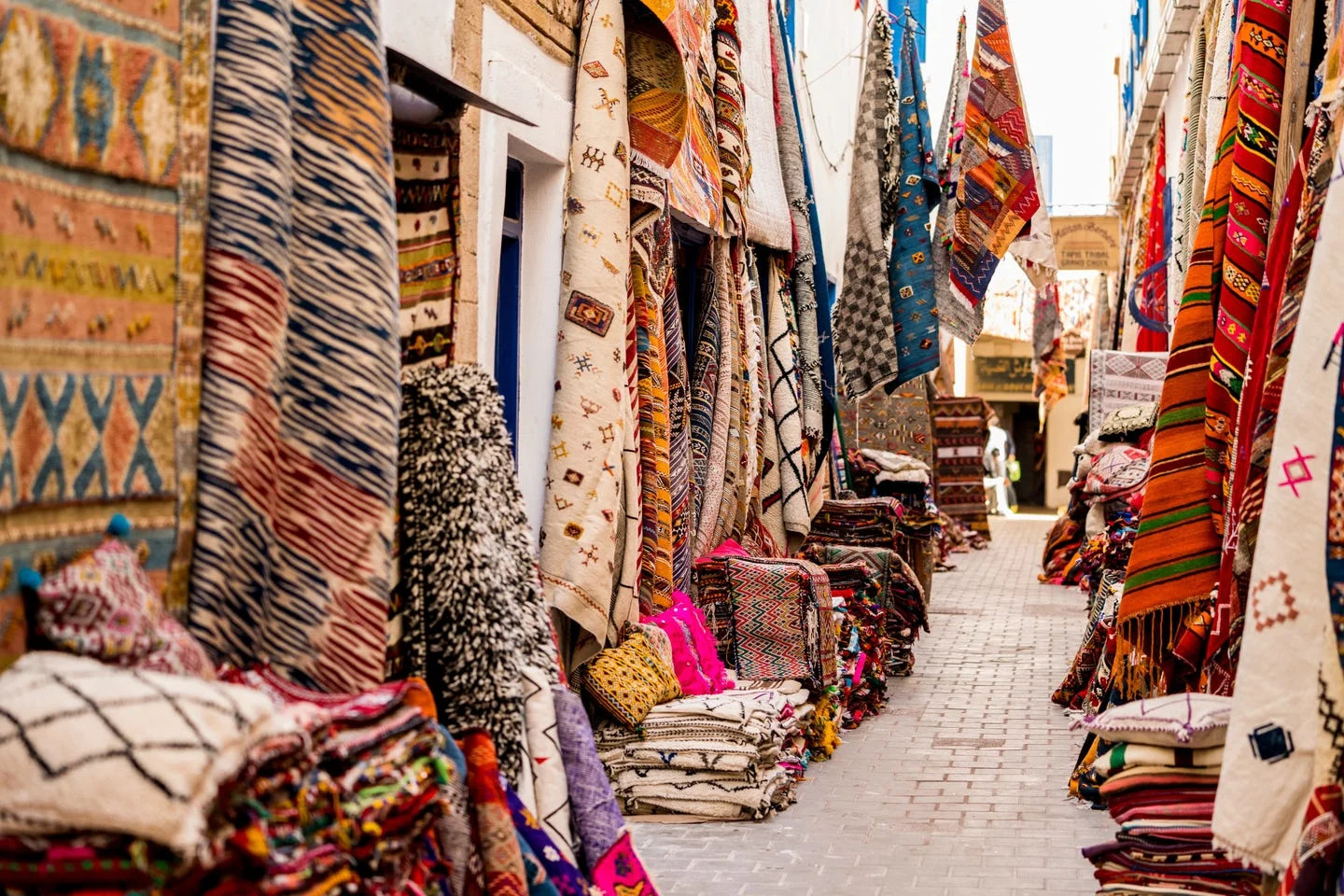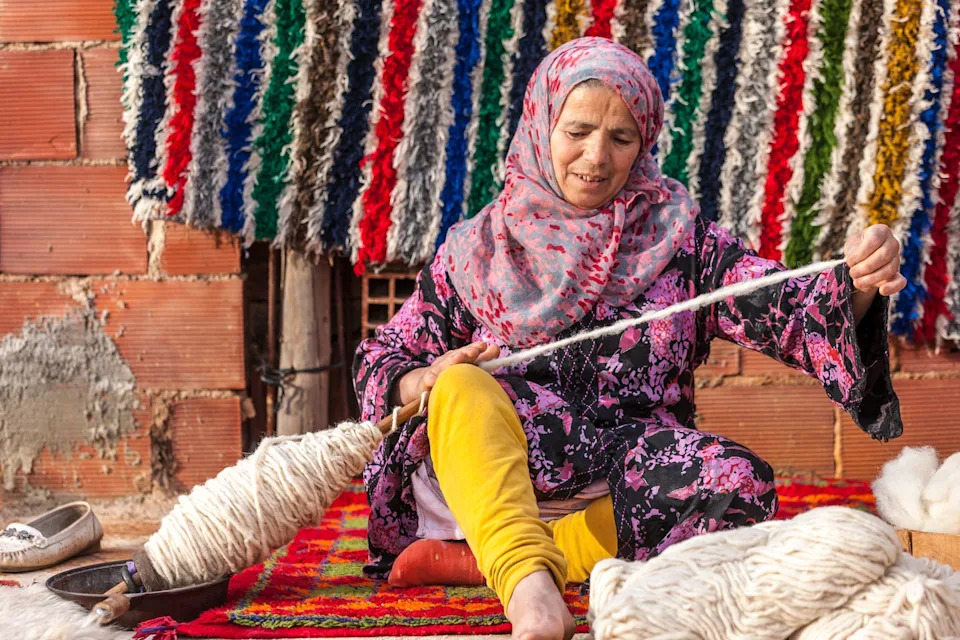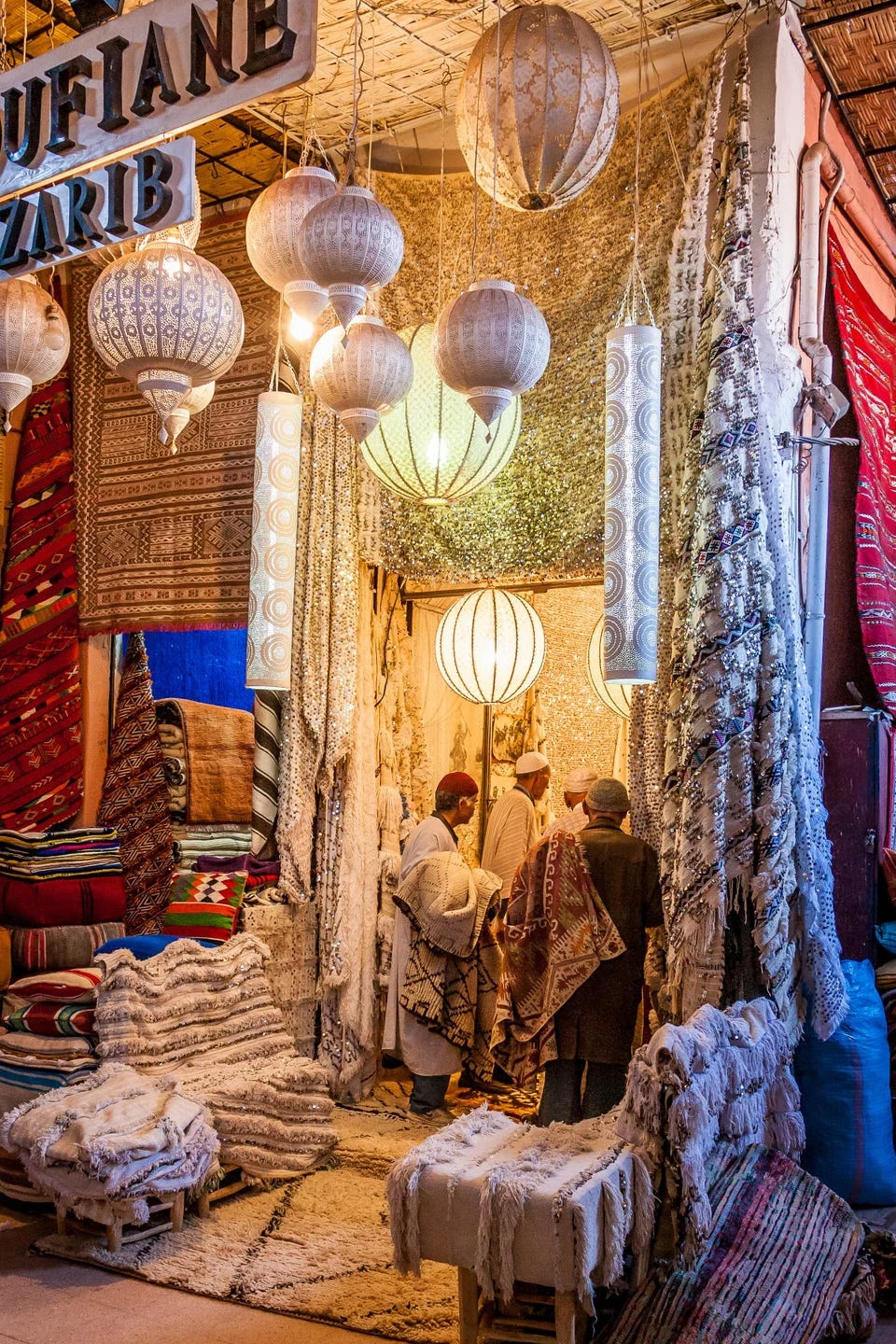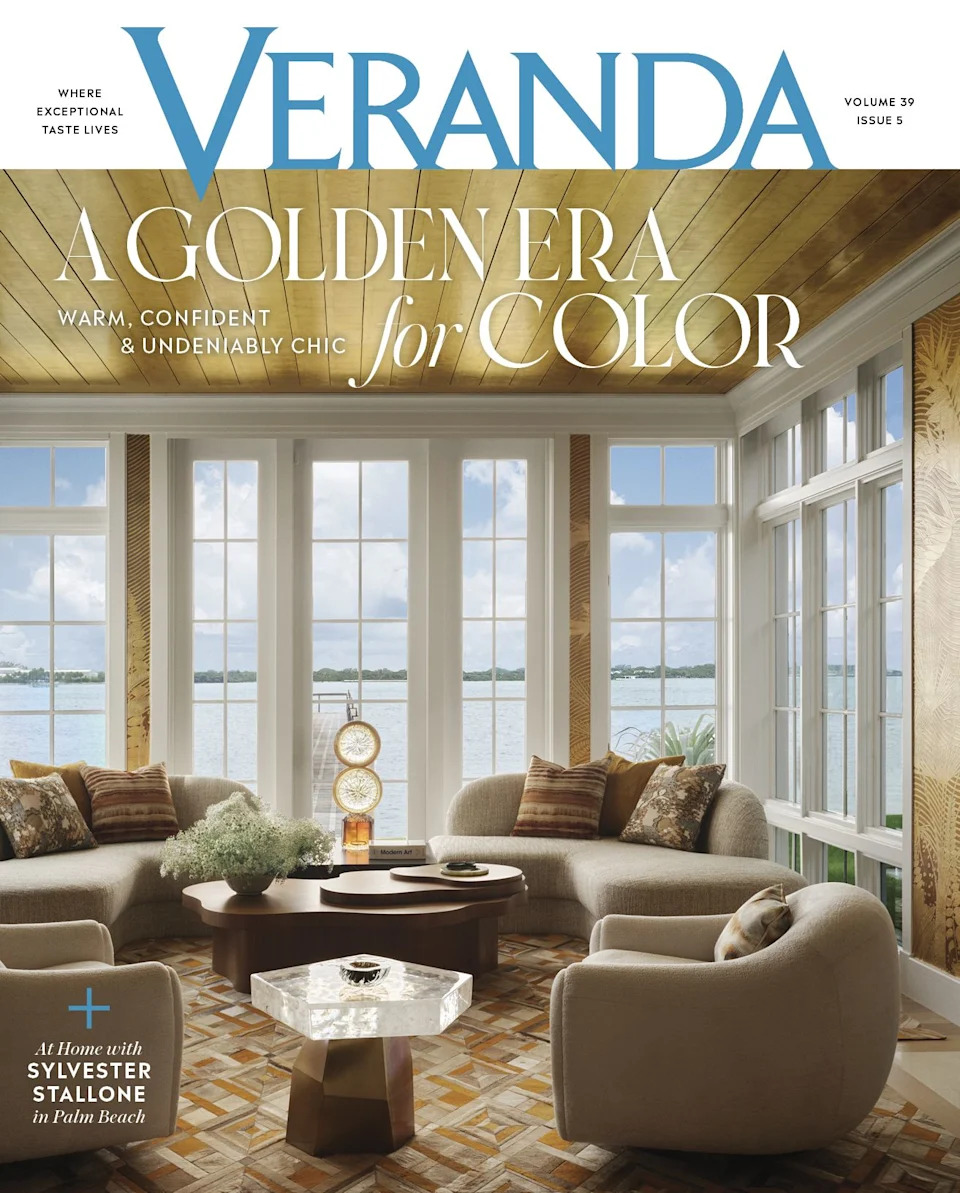I Traveled Across Morocco for the World’s Most Sought-After Rugs—Here’s What I Found

"Hearst Magazines and Yahoo may earn commission or revenue on some items through these links."
One evening while walking in Marrakech, I noticed an elderly man laying crimson rugs end to end along a cobblestone alleyway.
What’s he doing? I asked my guide, Jalil.
Lining the way to a restaurant, he told me, to make a nice passage for the guests. I paused, imagining how great any of those rugs would look in our dining room back home. Just then, a moped puttered up and parked on top of one. The driver and his girlfriend got off, removed their helmets, and sauntered into the restaurant.
AdvertisementAdvertisement#_R_2hbckr8lb2mav5ubsddbH1_ iframe AdvertisementAdvertisement#_R_4hbckr8lb2mav5ubsddbH1_ iframeThe original red carpet, Jalil said.
Rugs are everywhere in Morocco, from royal palaces to Bedouin mud huts to hidden alleys. In an environment of muted, nearly monochromatic hues—ochres, tans, sages, and browns—they glow like wildflowers. Spread across a landscape of stone, sand, and clay, they exude softness, comfort, and warmth. I defy any visitor not to fall in love with them.
 Ben Smim weaver Fatima Lrhachi spins wool. Joe Coca
Ben Smim weaver Fatima Lrhachi spins wool. Joe CocaBut try buying one, and the romance quickly fades. For all their ubiquity, rugs can sometimes be frustrating to purchase in Moroccan cities. That was my experience at least, during my first trip to the country, and informal research suggests I’m not alone.
It’s not that big-city rug merchants aren’t friendly. Walk into their stores and they’ll offer you mint tea and a place to sit, bring out dishes of walnuts and dates. You’re just browsing? Not a problem. Relax. Which rugs catch your eye?
AdvertisementAdvertisement#_R_2irckr8lb2mav5ubsddbH1_ iframe AdvertisementAdvertisement#_R_4irckr8lb2mav5ubsddbH1_ iframeBy this point in my first rug shopping experience, in Fez, I’d already paused to admire a few. The merchant’s assistants spread similar ones before me. Yes? No? I was instructed to indicate my approval with a wave of the hand, like royalty. Within moments, men were jogging back and forth, piling and unpiling towers of rugs, unfurling one after another on the floor. They watched me, panting, hopeful. By the time I realized that the easy hospitality had started to feel coercive, it was too late. The transaction had evolved from Do you want to buy a rug? to Which rug do you plan to buy? Flummoxed, I did—for $6,000 plus shipping.
I don’t think the merchant was duplicitous, exactly. But I’m a smart consumer—good at negotiating, happy to walk away from a bad deal—and that day my instincts got jammed.
 Rug merchants gather in Marrakech. Joe Coca
Rug merchants gather in Marrakech. Joe CocaIndeed, the whole experience left such a bad taste in my mouth, I went back to Morocco the following winter to try again. I was inspired by something Jalil told me (his full name is Abdeljalil Benlabhili, but he goes by one name, like Adele): Some top city merchants drive around in sports cars, while the women weavers, the people who actually create the rugs, are lucky to have a donkey. It’s an economic system dating to the time of camel caravans, and it favors a select few men. Surely, I thought, there must be a way around this system.
I hired Jalil to create a four-day itinerary for my trip. First stop: deep within the Marrakech medina—the labyrinthine old city—to another high-end rug source, Soufny Art Gallery. This time, there was no hard sell. The owner, Ibrahim, seemed more like an impassioned professor as he described different weaving techniques and styles, explaining how they’d emerged from diverse tribal lineages and extreme climates. He pointed out how patterns tell stories—certain nomadic tribes produce borderless designs, for example, reflecting their free-range lives—and taught me to differentiate between a well-made rug and a poorer-quality one (good ones are thick but soft and fluid when handled; the latter may feel hard or coarse, or be less densely woven). He said that dyes once included henna, saffron, poppies, figs, and walnuts, but that some locals now prefer chemical dyes—rugs made this way are still considered Moroccan, Jalil notes, but not “authentic.”
AdvertisementAdvertisement#_R_2kbckr8lb2mav5ubsddbH1_ iframe AdvertisementAdvertisement#_R_4kbckr8lb2mav5ubsddbH1_ iframeArmed with this new insight, Jalil and I piled back into his Land Cruiser and headed into the High Atlas Mountains, stopping for lunch at the “highest pizza parlor in Africa” before descending into the backcountry—and tumbling back in time, or so it seemed. Our itinerary included a few merchants in rural villages as well as “urban communes” like Taznakht (pop. circa 8,268), a rug hub where middlemen for big-city merchants barter with weavers’ representatives from hundreds of surrounding farms and villages at weekly souks, or outdoor bazaars.
We started in the ancient tribal village of Telouet, site of a once-majestic casbah, or fortified castle, that now looks as if it’s melting back into the earth. After parking on the main street, we walked through a cavernous tiled café and turned down a shadowy hallway, past a woman weaving on a wooden loom, before entering a tiny shop packed nearly to the ceiling with rugs.
Mohamed, the merchant, had donned a turban and djellaba over his tracksuit in honor of my visit—showmanship evidently being the better part of commerce even in rural villages. I spent nearly two hours perusing his inventory, frequently wandering back out to the street to text pictures to my family. Meanwhile, he and Jalil lounged like kids in a ball pit. After all, rugs were made to be used as mattresses and blankets, as well as seat, wall, and floor coverings.
The next day, at a souk in the village of Agdz, we ducked into a shop run by a soulful, kohl-eyed jazz musician who played Jimi Hendrix licks on a shell-encrusted three-stringed lute (called a hajhouj) while I examined a rug that his grandmother had woven when he was a boy (I bought it).
AdvertisementAdvertisement#_R_2lrckr8lb2mav5ubsddbH1_ iframe AdvertisementAdvertisement#_R_4lrckr8lb2mav5ubsddbH1_ iframeIn Taznakht, the rug hub, I visited Association Iklane, run by a dealer who, over saffron tea, told me that his rivals often chide him for giving too much profit to the weavers, but that they are the granddaughters of women his grandfather had worked with, and he felt obliged to honor the relationships.
Yes, I was dealing almost entirely with men. Turns out, I’d been naïve to think that I, an American traveler, could simply show up in a remote rural village and find talented Berber grannies ready to sell me their creations. Not only are a high percentage of rural Moroccan women illiterate, many are also steeped in a centuries-old mistrust of public activities like commerce. (Several new women’s collectives are working to change this, including the Anou Cooperative, an artisan-owned collective in Fez run primarily by women that allows shoppers to buy directly from the weavers).
But I was heartened by the courteous merchants I met whose prices were great and who never made me feel compelled to buy. There was an exception—a pushy jerk in a so-called “commune” on the outskirts of Taznakht—but luckily, my instincts were working, and I walked out.
Between rug purchases, I climbed a sand dune, wandered mud-walled paths, drove along vertiginous mountain roads and across a vast savanna, saw an argan tree full of goats (they adore argan nuts, source of the legendary oil), bought saffron in the valley where it grows, and stopped to allow a nomad to herd his camels across the highway. It was a vivid and wonderful trip, not least because it ended at the beach, with two days at the blissful Fairmont Taghazout Bay, a luxury resort hotel. Set beside a surfing village known for some of the world’s best waves—and thus populated with an international crowd of wet suit–clad surfer dudes—it allowed me to steam-bath the road from my pores and the kinks from my back in a hammam, and to swim, do yoga, and dine like a sultan. At nightfall, I watched the sunset from my balcony while women in hijabs strolled the beach alongside women in swimsuits. Morocco is a land of contrasts indeed.
AdvertisementAdvertisement#_R_2n3ckr8lb2mav5ubsddbH1_ iframe AdvertisementAdvertisement#_R_4n3ckr8lb2mav5ubsddbH1_ iframeIn the end, I bought five rugs in the backcountry for a total of $1,700 plus about $180 shipping—far less than what I’d paid in Fez. Add in the cost of hotels, gas, and my guide for four days, and my rugs still came out costing roughly one third the price of similar city rugs. Well worth it, if you like adventure.
But to me, that’s not the upshot of this tale. Bargain or not, souvenirs aren’t just decor; they tell stories. To this day, when I see the rug I bought in Fez, I feel a small pang of regret alongside my appreciation for its beauty. But when I walk barefoot over the $350 rug from Telouet that now lines the entrance to my study, I pause to wiggle my toes into its thick, poppy-red pile and remember my amazing journey. It’s the only red carpet I’ll ever need.
Plan Your Trip
Morocco is alive with aromas and sounds and shops at every turn. Two things helped me head off sensory overload: First, my guide, Jalil. Wise, warm, and deeply knowledgeable, he seemed to have a sixth sense about people, steering me clear of sketchy encounters and advising me through beneficial ones. Reach him through his website, Morocco Unplugged, or at [email protected].
The second essential is a peaceful hotel—or two! I began at the Fairmont Royal Palm Marrakech, a resort about 15 minutes from the city center. I had to drag myself away from my balconied room to sample the amenities, including four restaurants, swimming pools, pottery lessons, and an amazing spa (they also provide their own excellent guides). Later I stayed at Fairmont Taghazout Bay. Right on the beach, it offers many of the above amenities, plus surf lessons!
Want more rug-shopping tips?
Become a VERANDA Design Society Member
 Douglas Friedman
Douglas Friedman$125.00 at veranda.com
AdvertisementAdvertisement#_R_2q3ckr8lb2mav5ubsddbH1_ iframe AdvertisementAdvertisement#_R_4q3ckr8lb2mav5ubsddbH1_ iframeJoin the VERANDA Design Society for access to our exclusive designer-sourced guide to selecting the right carpet for every room.This article was originally featured in our September/October 2025 issue.
You Might Also Like
Spectacular Gifts for the Most Stylish Women in Your Life
16 Gorgeous Indoor Plants for Homes of All Sizes












